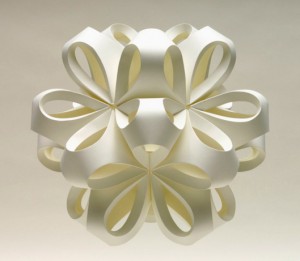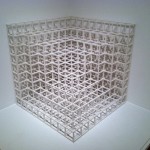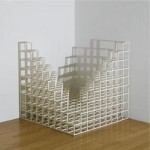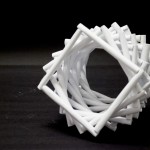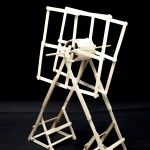From the website: “Richard Sweeney was born in Huddersfield, England in 1984. He discovered a natural talent for sculpture at Batley School of Art and Design in 2002, which led him to the study of Three Dimensional Design at the Manchester Metropolitan University, where he concentrated on the hands-on manipulation of paper to create design models, which ultimately developed into sculptural pieces in their own right.”
Sol LeWitt was one of the pioneering figures in both the Conceptual and Minimalist art movements of the 1960s and ’70s. Whether working as a painter, draftsman, photographer, printmaker, or sculptor, LeWitt conceived works of art that were fundamentally geometric and architectonic, and relied on the cube as a starting point for his explorations of space, time, form, volume, repetition, sequence, and variation.
Objectives:
Create a sculpture, abstract or objective, using recyclable materials. Demonstrate knowledge of creating movement and emphasis in a 3D form while keeping in mind the importance of physical and visual balance.
Requirements:
- Each student must create a total of at least 20 modules
- The sculpture must be able to support itself (this may vary depending on how it is displayed)
- Movement is displayed within the form (making straight lines look curved)
- Emphasis or focal point is displayed within the sculpture
- Use of recyclable paper such as computer paper, newspaper, or magazines
Possible Ideas:
- May work in partnerships or groups (the work load does not change for each student)
- May include the use of a base (cardboard, wood, mat board)
- Sculpture can be made to mount on a wall, sit on a table, or hang from the ceiling
- Sculptures may be painted (bring your own spray paint)
- Paper tubes and modules may vary in size
- Modules may vary in shape, size, or design (doesn’t necessarily have to be a triangle or square)
Procedures:
- Roll paper tubes from paper cut approximately 5.5 x 4 inches in size.
- From these paper tubes, create modules by gluing at least 3 tubes together.
- Use a minimum of 20 modules, gluing them together, using either hot glue (you provide your own hot glue sticks) or Elmer’s glue to create the sculpture.
- Paint if needed.
- Add a base if needed or devise a way to mount or hang from wall or ceiling.
Things you should ALWAYS do:
- Keep your project neat when working with glue = Craftsmanship!
- Be patient when gluing (more doesn’t always equal better!)
- Be aware of the amount of weight your sculpture needs to hold up
- Create movement in your sculpture (twisting, branching out, spiral designs, etc.)
- Create an emphasis (a place of interest in color or design)
Things you should NEVER do:
- Pile up modules and glob them together with glue
- Leave a mess at your table
- Eat the glue

